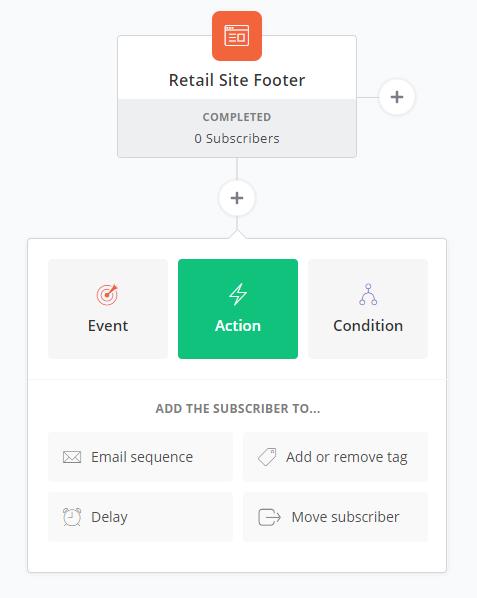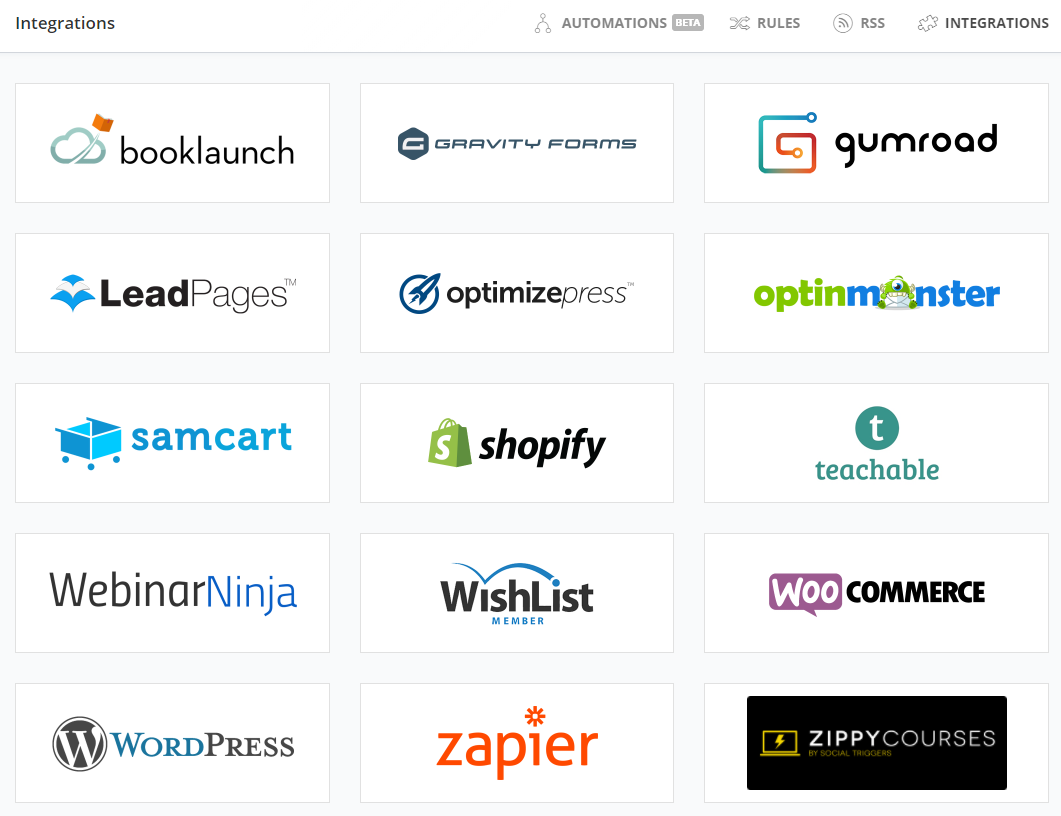Why should you choose ConvertKit for your e-mail marketing?

2020 Update: ConvertKit has a completely FREE plan now. You can sign up for it here and test ConvertKit for yourself!
After many years of assisting clients with their websites and e-mail newsletters and recommending MailChimp almost without thinking, I’ve become quite a big fan of ConvertKit.
I’m going to run you through a few features that ConvertKit has that I find very compelling. If you’re not coming at it from a ‘hobby, family, holiday fishing-trip update’ angle, then the ‘marketing’ features really shine. That's why they call it 'E-mail marketing for professional bloggers." And oh, don’t get me started on that automation!
Please be advised that if you click through some of the links in this blog post, I may receive a commission on any sales, at no extra cost to you.
How is ConvertKit different?
ConvertKit is relatively new to the e-mail game so naturally, in order to distinguish themselves from all the other companies that had a head-start, they’ve chosen to do things differently.
When you sign-up and login, you are struck by the simplicity of the interface in your account and the clarity of the options presented. At first glance, for someone coming from a phpList-then-MailChimp background, it almost feels like it’s missing quite a few things.

Subscriber-centric
While in MailChimp and most of the other platforms, subscribers are organised neatly into ‘lists’, ConvertKit chooses to center it all around the subscribers.
Many users of MailChimp were annoyed at the fact that if you wanted a subscriber to be in two or more different lists, it counted as two different subscribers and would eat into your allowance. Too many of them and you’re easily moving to the next tier. It is not my intention to bash MailChimp in this article, they certainly do a lot of things right.
In ConvertKit there is no such thing as a ‘duplicate subscriber’. A vague notion of ‘lists’ can be found in the ‘forms’ section. That is how ConvertKit organises subscribers, so that you know where they signed up initially. But apart from that, you can tag, group, segment and enrich your subscriber base any way you want, crossing those boundaries.
This is one of the annoying things in MailChimp - since everyone is in their separate list, if you want to send an e-mail ‘campaign’ to everyone, you’d have to create a duplicate and send it twice. You’re forced to choose one list only, when you try to send an e-mail. With ConvertKit, you can send to whoever you like, in any combinations and segments.
I also like the way it shows you a 'log' of all e-mails sent to a particular subscriber since they first signed-up.
Resending to unopens
Along the same lines, if you send an e-mail to a group of people and a number of them don’t even open it, you can use this handy feature to send it again only to this subset. In MailChimp you’d have to do some pretty serious acrobatics to achieve this and it would involve creating a duplicate campaign. Not to mention all of your statistics (open rates, click-throughs, etc.) would be skewed and weird and hard to collate.
Automations
The piece de resistance! I am quite the automation freak. I love it when stuff happens by itself, after I’ve carefully orchestrated it. From what I’ve seen, ConvertKit marketing material tends to open with this - it’s that good. And if you combine this with their API - oh man!
While MailChimp seems to be trying to catch up, I think the automation part is where ConvertKit really knocks it out of the park! They’ve moved beyond simple autoresponders, into complex automated sequences triggered by any event - from someone clicking a link in one e-mail, to subscribing to a form, being tagged and everything in-between.
It’s so complex that they need a visual builder for it.

At the center of the automations are the ‘sequences’. These are logical groupings of e-mails that can start and stop depending on events triggered by subscriber action or by you (directly or through the API).
Sequences are one of those features I wish I’d thought of myself! Along with tagging subscribers and various events, you can achieve some very powerful ‘marketing’ automation.
If you remember, back in the 90s and then 2000s, there was this e-commerce mantra everyone was repeating: e-commerce personalisation - which roughly meant: ‘modifying the content and behaviour of a website/store/marketing depending on a customer’s preferences and actions’. This required serious data collection about the customers in order to dig up the most specific recommendations.
Of course, we all know who is doing a great job at this nowadays (wink, wink!), but it is like they’re reading your mind, isn’t it?
Well, personalisation is still the holy grail of online marketing and ConvertKit helps a lot with this and I think if you employ this feature well in your e-mail marketing, you can seriously improve your ROI. I’m already dreaming up ways of making this work for me in my integration in CCIDESQ (my own e-commerce platform and CMS).
Think about automatically tagging a customer when they make a purchase on your website, with the brand, keyword or category of those products. Say they buy a course from you: you can add them to an introductory sequence that will send them a series of welcome or tutorial e-mails over the following few weeks, helping them get a head-start with your course.
That sequence will then run by itself, sending the e-mails to that subscriber automatically. Of course the subscriber can stop it at any time or you can stop it yourself depending on the actions they perform while reading it - ie. what link they click, etc.
The sequences also run simultaneously and independently for each subscriber. Someone who signed up today starts their own sequence while other subscribers from past weeks are further into it. You can see where everyone is at any given time.
These sequences are so different from the old e-mail marketing that we all used to do: build up a list of subscribers and maybe, once every couple of weeks, send out an e-mail ‘blast’ to all of them - with the same content. Hammer and nail, anyone? Sequences run their course in parallel to your ‘regular’ e-mail broadcasts.
ConvertKit has a lot of integrations with various external services and plugins, such as WooCommerce, LeadPages, Wordpress, etc.

The surprise editor and keeping it simple
One thing that many newcomers to ConvertKit are vociferous about is the lack of a ‘visual editor’ for the newsletters. I admit it was a bit of a letdown for me too.
If you’re coming from other platforms that have strived for years to build and improve their editors to help you build ‘beautiful e-mails’, it may come as a surprise that such a capable service would lack that… until you understand the reasoning behind it.
The founder of ConvertKit, Nathan Barry, explains this very decision in a blog post. He says that 'beautiful e-mail templates hurt your business' and advocates that ‘less is more’.
According to Barry, complex, visually-heavy e-mail messages tend to detract from the message. If you strip all of that down, all you’re left with is thin content - or no content!
Nathan claims that working on very complex visual layouts for e-mail is actually trying to get out of writing meaningful, transforming and valuable content. In his own words:
“That’s right, the content. So we should be stripping away everything else that isn’t necessary in order to focus on the content. Multi-column layouts, background images, logos, and all the other nonsense that typically fills marketing emails doesn’t deliver value to the recipient. Instead it is all about you, the sender. Flip that around and start delivering value.”
I kind of tend to agree but then, if you’re coming from an e-commerce point of view, it may not be enough for you. Of course, the editor in ConvertKit does allow you to write HTML content and create templates but well… that’s not for everyone. There are ways to obtain already-made templates that work in ConvertKit from various sources though.
The API and beyond
As I said above, I love automating things. Nowadays it seems there’s an API for just about anything and I’ve implemented/consumed my fair share in my work. CCIDESQ itself has one!
The ConvertKit API is currently at version 3 and with it you can easily integrate your website in order to:
-
Obtain the forms you’ve added in your account
-
Add subscribers to forms or e-mail sequences
-
Create tags and add it to subscribers
-
Add and update custom fields
In CCIDESQ, I’m planning on implementing the full power of this API - automating the sign-up process subscriptions, e-commerce actions - such as ‘following’ a particular author, brand or category.
You can automatically tag customers with the products, brands, categories, authors they buy or even the searches they perform on your site. These open up a lot of segmenting possibilities when you’re actually sending out marketing e-mails. No longer a dull e-mail.
Although the automations and sequences may seem overwhelming at first, it’s like having a brand new ZX81 back in the day - so many options, so many choices, what should I do with it first? Eeeeek!
Other notable features:
-
Cold subscribers filter
-
Conditional content and tags with if/else blocks
-
Segmentation
-
Create broadcasts from RSS feeds
I hope I got you hyped up enough to give it a try. Personally, in the systems I work with, I’m looking less for bells, whistles and eye-candy and more for valuable, clear, powerful features that save time and help me connect better with my audience. The automation alone and the philosophy behind the whole thing is a breath of fresh air.
Try ConvertKit for free

Cristian
I specialize in providing clear one-on-one training in software such as Camtasia and Descript, helping you make the most of these programs.
Whether you're interested in learning how to create training videos and tutorials for your company or for YouTube, or are hoping to create your own course or start a podcast, I'm here to help you get started and give you all the shortcuts.
Categories